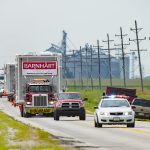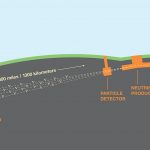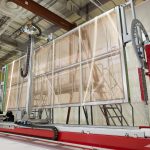Physicists often find thrifty, ingenious ways to reuse equipment and resources. What do you do about an 800-ton magnet originally used to discover new particles? Send it off on a months-long journey via truck, train and ship halfway across the world to detect oscillating particles called neutrinos, of course. It’s all part of the vast recycling network of the physics community.
Long-Baseline Neutrino Facility
From Black Hills Pioneer, Jan. 18, 2019: South Dakota media reports on a public informational meeting that introduced the general contractor/construction manager for the Long-Baseline Neutrino Facility to the community.
Fermilab has finalized an agreement with construction firm Kiewit-Alberici Joint Venture to start pre-excavation work for the Long-Baseline Neutrino Facility, which will house the enormous particle detectors for the Deep Underground Neutrino Experiment. The South Dakota portion of the facility will be built a mile beneath the surface at the Sanford Underground Research Facility in Lead, South Dakota.
From The Momentum, Nov. 5, 2018: Lengthy article on DUNE from Thai media.
From CERN Courier, Oct. 29, 2018: The world’s largest liquid-argon neutrino detector has recorded its first particle tracks in tests at CERN, marking an important step towards the international Deep Underground Neutrino Experiment under preparation in the United States.
From Black Hills Pioneer, Oct. 26, 2018: The new building will serve as housing for equipment that is currently located at the Ross complex, which will need to be moved in order to make room for the Long-Baseline Neutrino Experiment/Deep Underground Neutrino Experiment construction planned in the coming years.
From Black Hills Pioneer, Sept. 25, 2018: Two years in the making, a neutrino detector built at CERN for the Deep Underground Neutrino Experiment , which is being used as the prototype for the much larger Long-Baseline Neutrino Facility, detectors that will be housed at the Sanford Underground Research Facility in Lead, South Dakota, has recorded its first particle tracks.
From Rapid City Journal, Sept. 14, 2018: DUNE is mentioned in this piece from South Dakota media on the federal appropriations bill.




